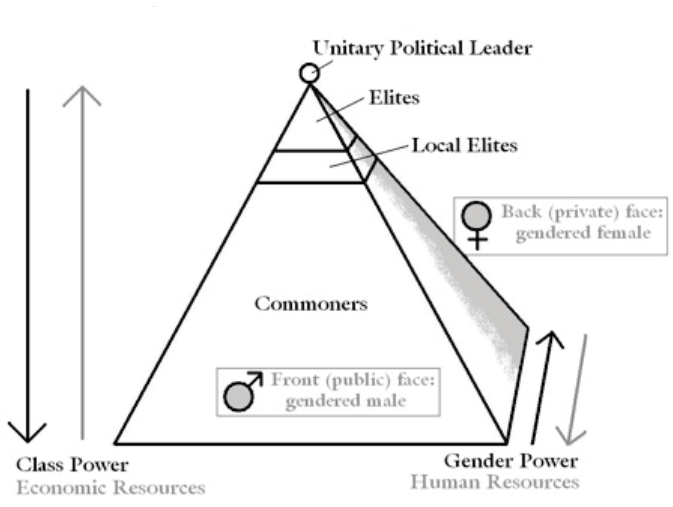The Hittite Kingdom was a society that occupied the region of modern-day Turkey from 1700 to 1200 BCE. The Hittite society can be described by a pyramid, as shown in Figure 1. The kingdom was ruled by a king, who was a unitary political leader (Elshaikh). However, the king did not control all aspects of the kingdom: some branches were controlled by the elites, for example, the Chief of the Scribes (Elshaikh). At the local level, there were local elites – a council of Elders comprised of older males (Hittite Empire and Society 9). The rest of the people lived in small villages and engaged in agriculture. In the Hittite society, people with higher class power controlled more economic resources. Additionally, women in this kingdom had little power; for example, in royal families, they were often used to establish political alliances through marriages (Thomas 301). Therefore, gender power was unequal: men controlled wealth, while women were seen as reproducers of the labor force.

The Hittite Kingdom is similar to Sumer in many ways. For example, in Sumer, due to the Great Cultural Divide, there was a difference in the use of language: the elites used written language, while non-elite people communicated orally (Morillo). The same is true about the Hittite Kingdom: they even used the cuneiform writing borrowed from the Sumerian language through the Akkadian language (Hittite Empire and Society 5). Both societies had the elite class: in Sumer, it comprised the royal family and high priests, while in the Hittite Kingdom, it included the king’s family and Chiefs of different government branches. The unique feature of the Hittite society is that, even though women had less power than men, they generally had more rights than their counterparts from other ancient societies.
Works Cited
Elshaikh, Eman M. “The Hittites and Ancient Anatolia.” Khan Academy. Web.
“Hittite Empire and Society.”Penn Arts & Sciences: Department of Linguistics. Web.
Morillo, Stephen. Frameworks of World History: Networks, Hierarchies, Culture. Vol. 1, Oxford University Press, 2013.
Thomas, Christine Neal. “Gender and Politics at Ugarit: The Undoing of the Daughter of the Great Lady.” Journal of the American Oriental Society, vol. 139, no. 2, 2019, pp. 287-305.